12 Types and Varieties of Longswords and Their Evolution
NO AI USED This Article has been written and edited by our team with no help of the AI
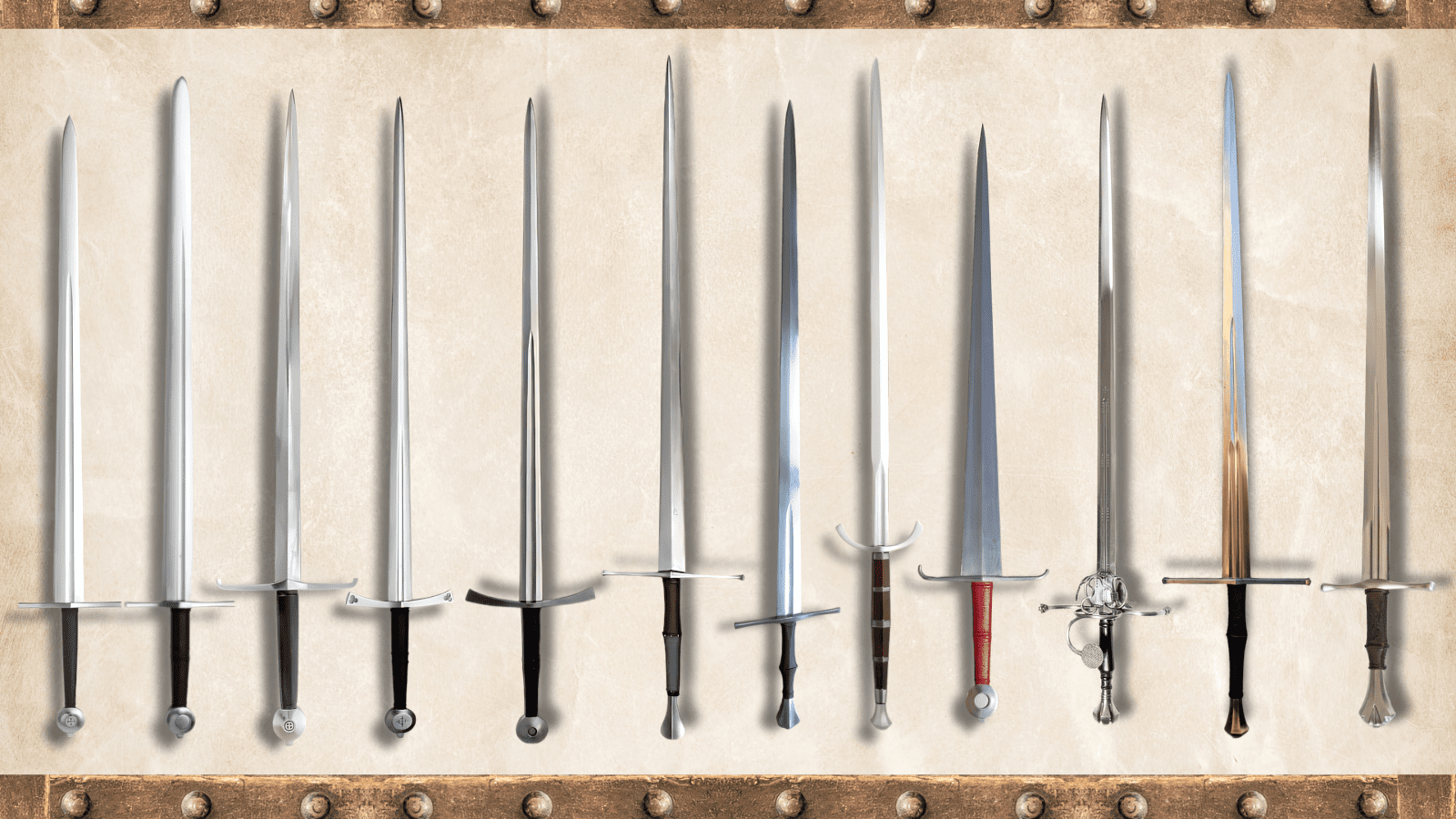
The European double-edged longsword comes in variations that have evolved to meet the current needs of the battlefield.
Some were meant for slashing strikes, such as the Viking sword, while others were ideal for self-defense against plate armored combat.
This article will examine all the longsword types based on medieval sword findings, starting from the Early Middle Ages through the Renaissance.
What is a European Longsword?
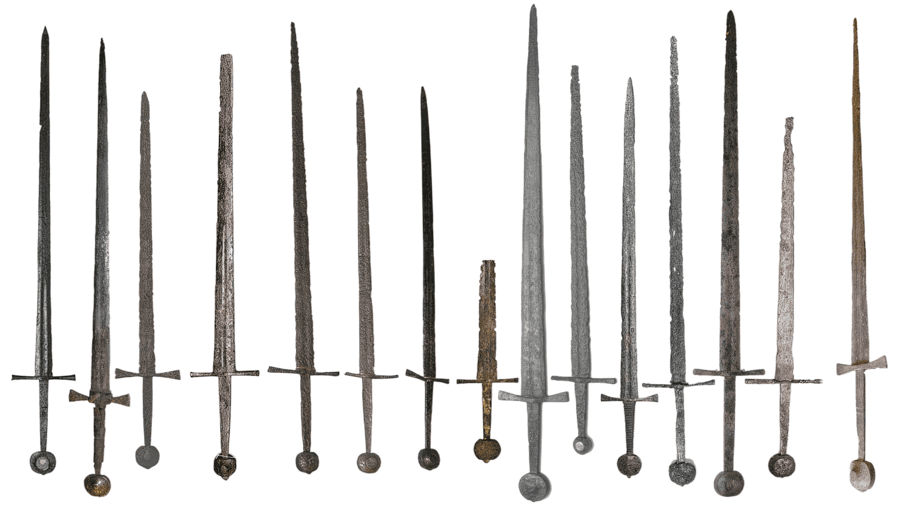
The European longsword?the name derives from the German “langes schwert,”?is a straight, double-edged blade used during the Middle Ages.
It was called a longsword because its dimensions were longer than the standard European medieval sword, known as the knightly or arming sword. Early larger swords known today as hand-and-a-half swords or bastard swords were essentially longswords.
These blades varied with the swordsmen’s needs and fighting styles, especially with the presence of plate armor on the battlefield.
The evolution is best observed in Oakeshott’s Typology, a classification of European double-edged blades by Ewart Oakeshott, an expert on European-edged weaponry.
1. Longsword Type XIIa
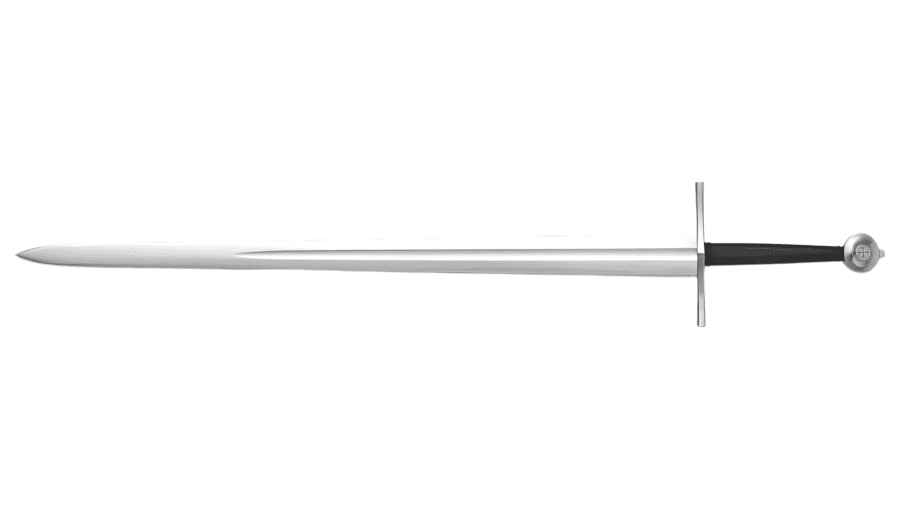
The earliest type of longsword was based on the Type XII, known as the archetypal knightly sword of the Early Middle Ages, which has the same design as its one-handed sword variant with a 3 to 4-finger longer hilt, allowing for a grip consisting of one or two hands.
The XIIa was, in certain cases, called a “grete swerdes” (great sword) or a war sword. These blades, which appeared during the latter half of the 13th century, had a lenticular blade cross-section with a fuller and rounded tip.
This has led to some calling it a broadsword, which is used to describe a 16th-century basket-hilted blade.
2. Longsword Type XIIIa
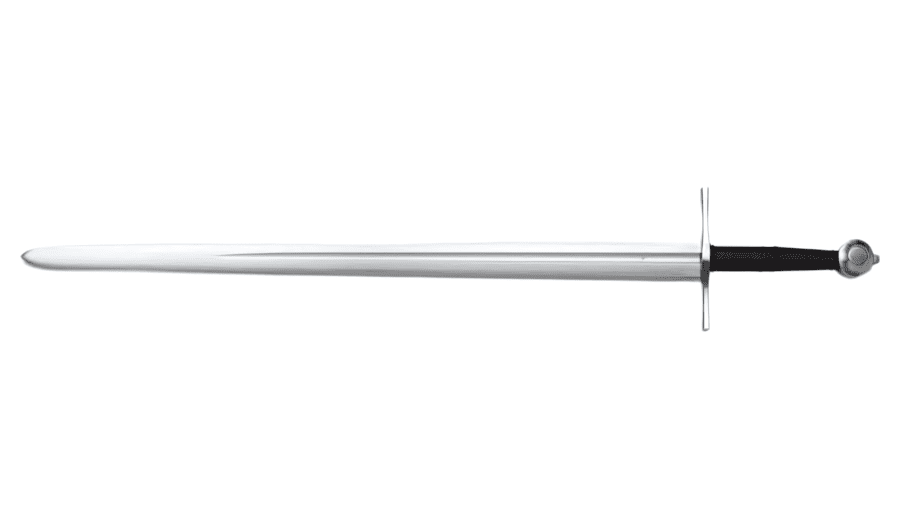
The Type XIIIa was a popular blade sometimes referred to as the “Medieval War Sword.” These swords have proper hand-and-a-half cruciform hilt holding a massive broad blade used for cutting and slashing.
They appeared in the late 13th century and were designed to combat the strengthening of Europe’s mail armor and the appearance of early plate armor. The XIIIa longsword has a lenticular cross-section, a deep, wide fuller, and a rounded tip, emphasizing bashing attacks.
3. Longsword Type XVa
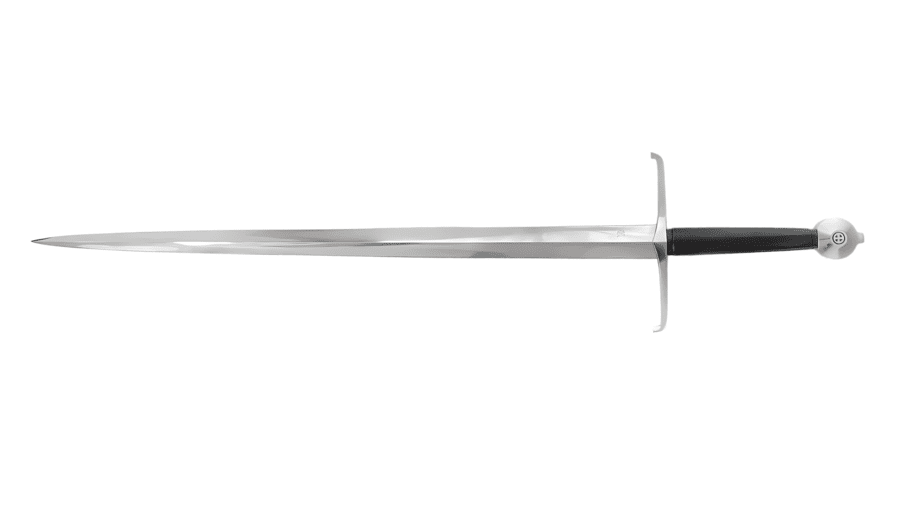
The popular first true classic longsword is the Type XVa. Its hilts vary from a bastard hand-and-a-half size to a massive 10-inch (25 cm) variant.
These blades could be used as primary weapons without the need for shields and excelled in thrusting attacks.
They appeared during the late 14th or early 15th century to defend against the increase in plate armor. They had thin tapering tips with reinforced diamond blade cross sections that proved functional for finding gaps in armor.
4. Longsword Type XVIa
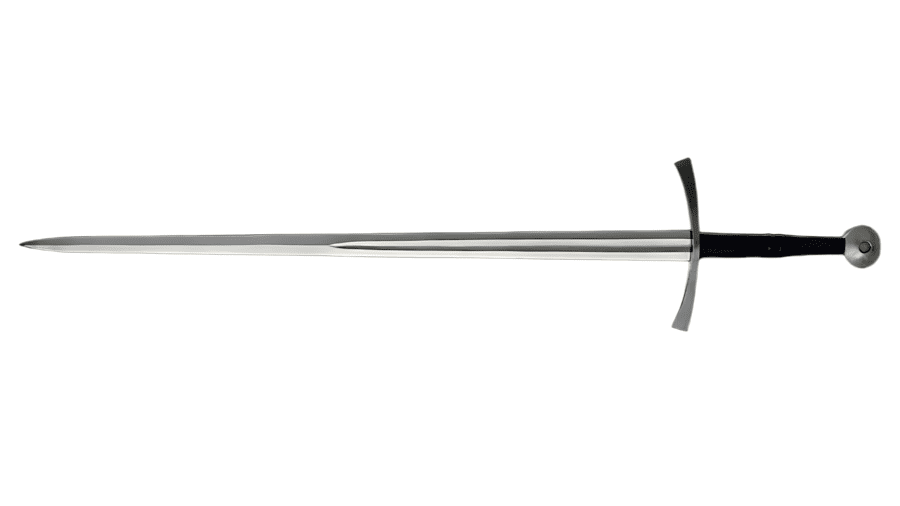
The type XVIa longsword variant is a broad version of the previously popular Type XVa. These swords are reinforced versions with a hexagonal blade cross-section near the hilt, offering more power when used against improved plate armor, especially in puncturing attacks.
The blade is fuller, about 1/3 of its length, with the upper section being longer and gradually tapering.
“While the point is acute enough even to penetrate plate armor, there was enough width and edge at the ‘center of percussion’ to enable the blade to strike a very powerful shearing blow,” says Oakeshott, describing the strength of this medieval longsword.
5. Longsword Type XVII
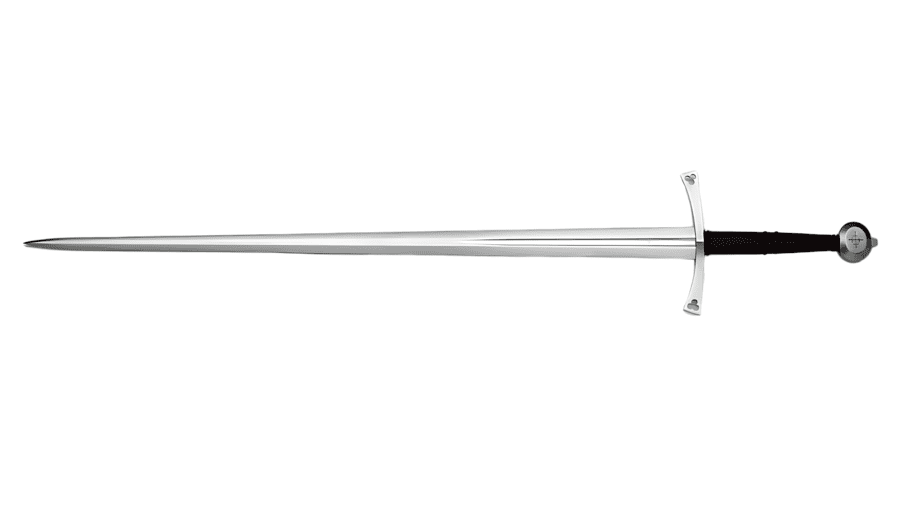
The Longsword Type XVII is a rare variant with a heavier or lighter design and a reinforced hexagonal blade throughout the blades.
Its sharp tip, combined with a study, stiff design, made it ideal for combating the increasing plate armor of the 15th century.
The blade fuller varies in size, ending near the tip or at the mid-point. Each of these blades tapers to an acute point reminiscent of later 16th-century rapier blades.
6. Longsword Type XVIIIa
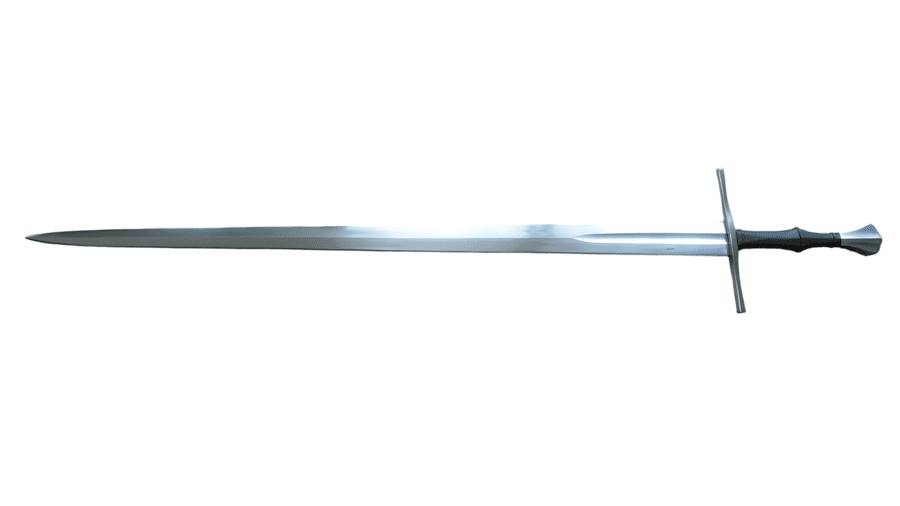
The XVIIIa type is the first longsword variant of the popular XVIII group, which features the iconic longsword form. The XVIIIa is identical to its one-handed version, with a fairly slender blade accompanied by a reinforced spine with an occasional fuller near the crossguard.
These swords were used during the 14th and 15th centuries, with some examples found to have been those of Edward III, the King of England.
7. Longsword Type XVIIIb
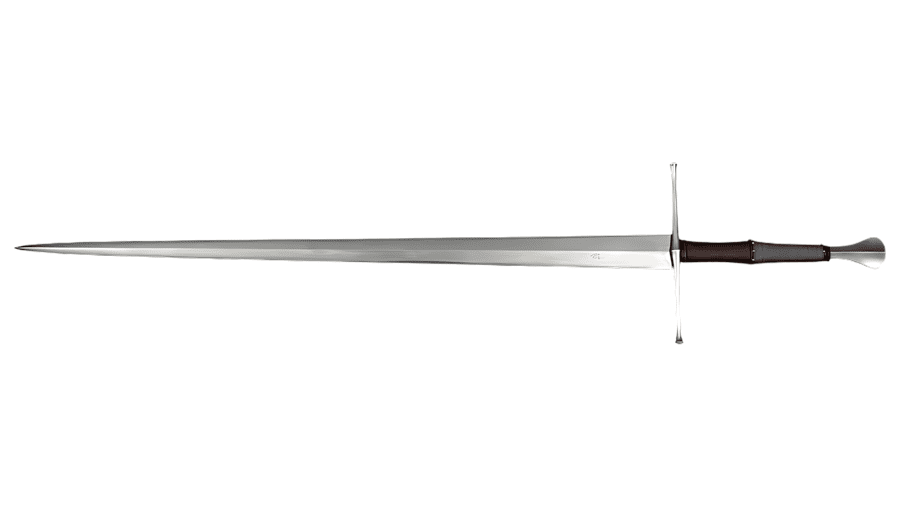
The Type XVIIIb is one of the most popular longsword variants. It represents the late and improved versions that emphasize versatility in cutting and thrusting.
The Oakeshott type XVIIIb is usually two-handed and reaches an overall length of around 53 inches (135 cm).
XVIIIb swords, with their long and slim blades, spread throughout Europe due to their practicality on foot, horseback, as a daily self-defense tool, and for dueling.
It allowed its wielder many styles of fighting, such as thrusting, slashing, and half-swording. ‘This longsword is the jack of all trades,” says David Miller, a sword martial arts and weapons instructor.
8. Longsword Type XVIIIc
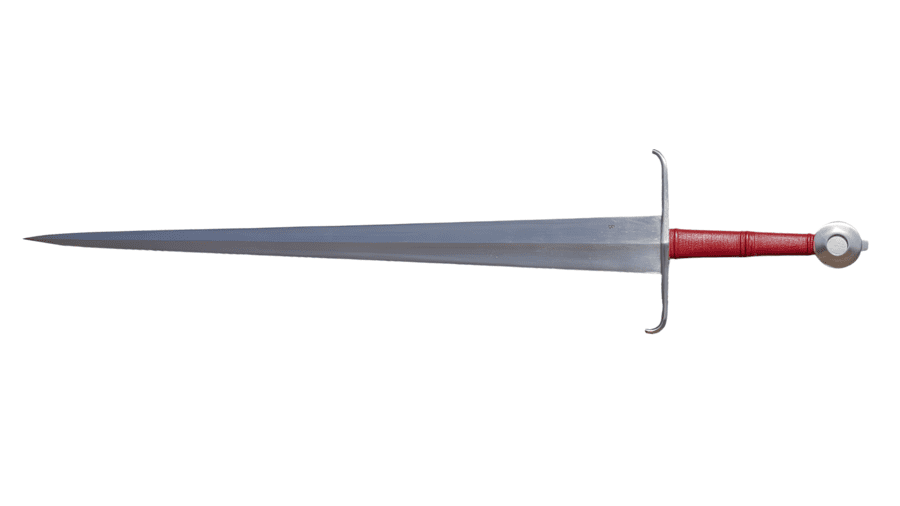
Type XVIIIc longswords required the same two-handed use as the XVIIIb, with a shorter blade length and wider proportions.
The sword’s width sometimes reached more than 2 inches (5 cm). XVIIIc blades have a reinforced mid-rib running across their length.
This design allowed better defense against fully-kitted plate armor.
9. Longsword Type XVIIIe
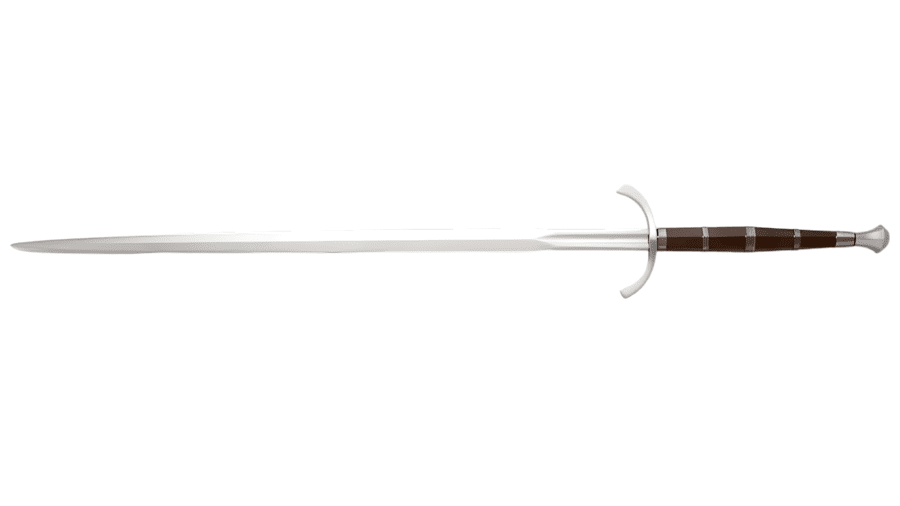
The rare Type XVIIIe longsword was most popular in North Germany and Denmark, where it gained its nickname, “The Danish War Sword.”
XVIIIe blades have the usual narrow, unsharpened ricasso used as a secondary grip similar to the later zweihander. It has a flattened diamond cross-section ending with a strongly tapered tip.
The hilt is one of the largest variants, allowing for a firm grip with a massive crossguard for protection.
10. Longsword Type XIX
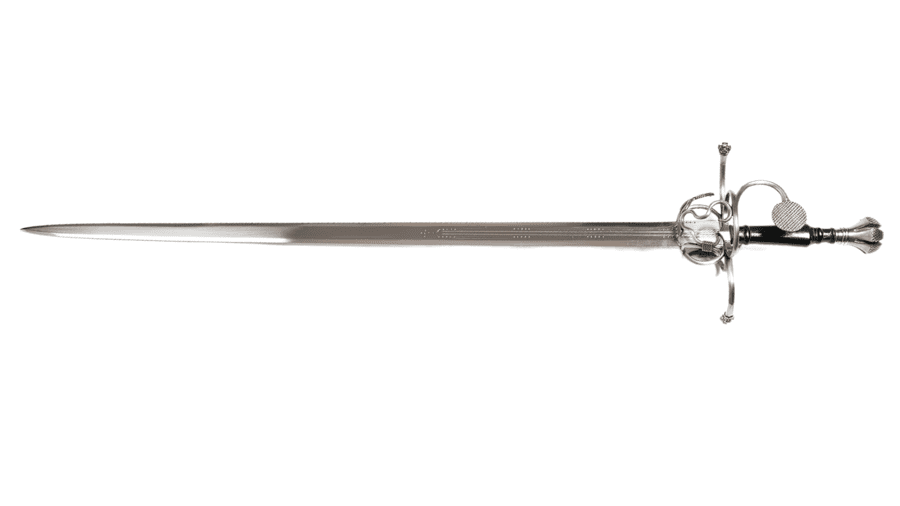
While the Type XIX was named a one-handed sword in Oakeshott’s “The Sword in the Age of Chivalry,” with continuous research, he renamed it a hand-and-a-half variant in his later “Records of the Medieval Sword.”
These large swords are as rare today as they were during the Renaissance. They have long blades, with short ricasso, a single fuller with parallel edges running to the tip as well as a ring finger for protection.
11. Longsword Type XX
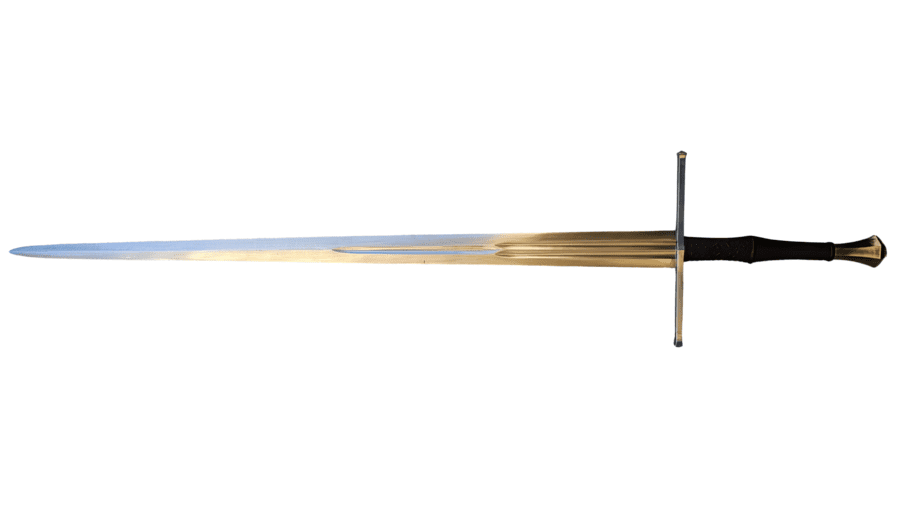
The enormous Type XX longsword variant had one of the heaviest and longest blades and was often mistaken for a greatsword. The blade had a hexagonal or lenticular profile with various-sized fullers.
These swords emphasize two-handed cutting and slashing attacks rather than targeting gaps in enemy armor. They were sometimes called war swords due to their massive two-handed hilts with heavy pommels used for brute smashing.
12. Longsword Type XXa
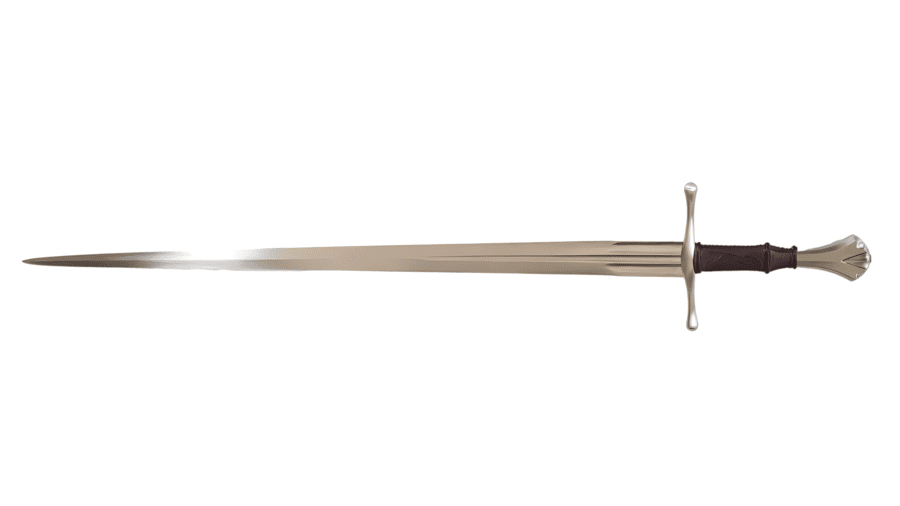
The Type XXa is a slimmer, tapered version of the Type XX. Its shorter and lighter design makes it more maneuverable in combat.
These blades carry the same traits as the Type XX, featuring multiple fullers and a big two-handed hilt. The blade’s pointed finish allows for thrusting attacks.

